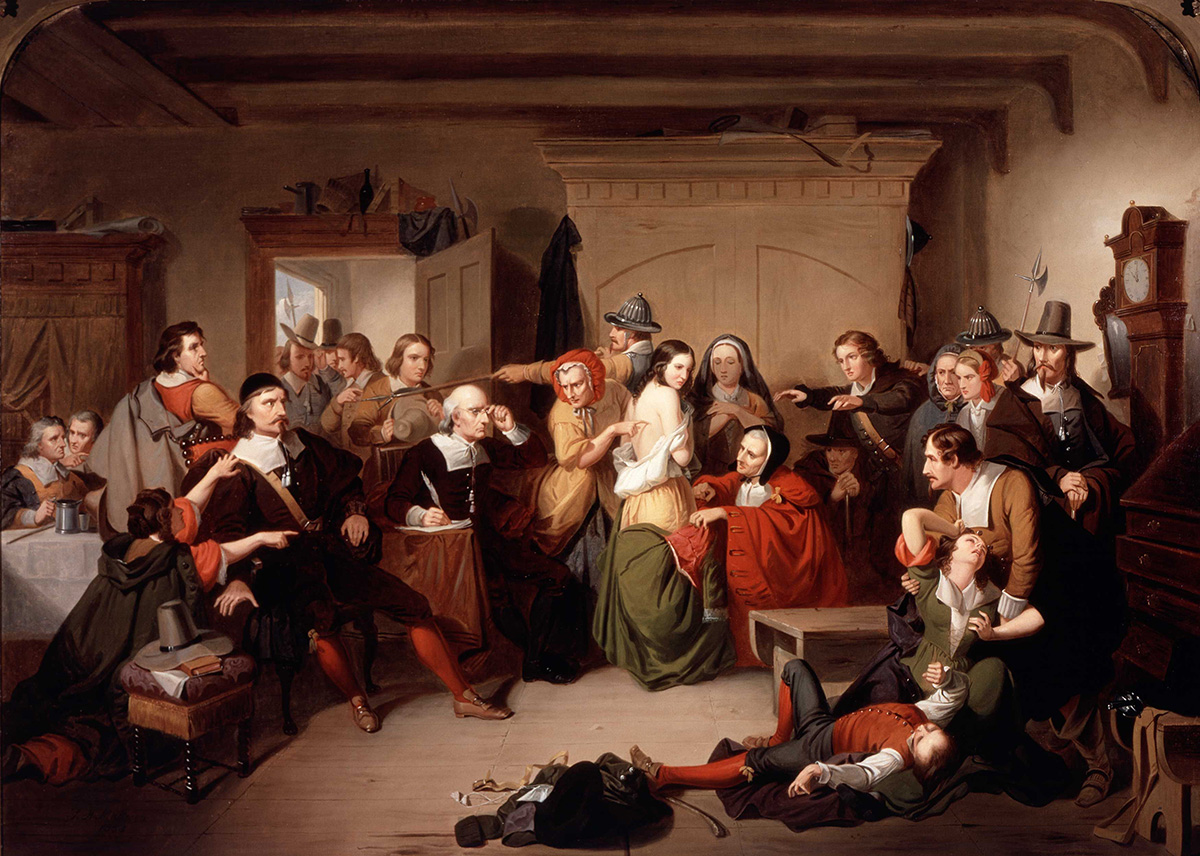History & Politics
Maryland Bill to Exonerate Those Accused of Witchcraft Gets a Hearing Next Week
Maryland—whose last witch trial was held in 1712—never saw witch hunts on the scale of Massachusetts, but early court cases around slander and witchcraft are a part of the state’s legal history.

During the bitter winter of 1698, a deadly influenza epidemic spread across St. Mary’s County, the colonial jurisdiction named for the mother of Jesus.
Townspeople blamed an old woman named Moll Dyer, who lived alone in a forest cabin. A former indentured servant, herbalist, and beggar who had spent time in the West Indies, she was believed by some to practice witchcraft.
A torch-carrying mob, according to the legend that has survived for centuries, took to her home one night and, finding it empty, set it ablaze. Dyer, who had fled for her life, was found several days later, clinging to a rock and dead of hypothermia. Her right hand remained frozen to the chilled gray stone, while her left arm was strangely outstretched, as if raised in a stiffened curse.
In 1968, Washington Evening Star journalist Philip Love, with the help of a local grocer who had heard the tale of Moll Dyer as a boy, located the boulder upon which she reputedly died. Four years later, the National Guard eventually dug out the 875-pound fieldstone. And then in 2021, the massive rock—a handprint-sized depression said to be the result of Dyer’s clutch still visible—was ceremoniously placed outside the St. Mary’s historical society.
The details behind the Moll Dyer saga are murky at best, but it is the most popular Maryland witch hunt story. Leonardtown commemorates her death each February with a weekend slate of events.
Forty-four years earlier, violent winds and dangerous seas plagued a Maryland-bound ship called The Charity, putting the fear of God into its crew—which soon convinced itself that a passenger named Mary Lee had conjured the storms. A Jesuit priest on the ship later recounted that the sailors seized Lee and searched her body for the markings of the devil.
She was hanged, her corpse and personal possessions tossed overboard.
Maryland never saw witch hunts on the scale of Massachusetts. It’s believed that perhaps a dozen people were indicted in total, compared to 19 executed in Salem in 1692 alone, but early court cases around slander and witchcraft are a part of the state’s legal history.
In 1635, the Maryland Assembly adopted England’s Witchcraft Act, making its practice punishable by death. The law was rarely used and just one person, another former indentured servant, a woman who had managed to become a land- owner, was executed. On Oct. 3, 1685, 12 jurors declared Rebecca Fowler guilty of being “led by the instigation of the Divell” to practice “certaine evil & dyabolicall artes called witchcrafts.”
The last Maryland witch trial was held in 1712, when Virtue Violl, described as a “County of Talbott spinster,” was acquitted of rendering another woman’s tongue “lame and speechless.”
This past October, Anne Arundel delegate Heather Bagnall pre-filed a resolution to formally exonerate the women (and one man) accused of or tried for witchcraft in the state. Contacted by a constituent about the movement in New England to exonerate individuals accused of witchcraft and a similar effort here led by Howard County attorney Elizabeth Pugliese-Shaw, Bagnall says she was simply acting on her belief “that it’s never the wrong time to the right thing.”
Subsequently, two Fowler descendants contacted her, wishing to testify for the resolution.
HJ2 Criminal Law: Witchcraft Exoneration—a resolution “Exonerating those accused, tried, or convicted of witchcraft in the Province of Maryland prior to the American Revolution”—has received a hearing date of 3 p.m. on March 10 in Annapolis.
It was not until the re-election of President Trump, Bagnall says, that her resolution started garnering attention, as people began to draw parallels between the conspiratorial witch accusations—often directed at midwives, the poor, the outcast—and the current political climate.
“Anybody who isn’t the status quo [is threatened],” says Bagnall, mentioning Arthur Miller’s 1953 drama The Crucible, a retelling of the Salem trials as allegory for the McCarthy-era moral panic and persecution of individuals on the political left.
“I never intended for this to become an exercise in political discourse. I have 16 bills in this year, I’m on four different commissions, and I chair a sub-committee, but I’m glad this happened,” says Bagnall. “There have been debates in the comment section of newspapers about how important this conversation is. It just became relevant again as we saw these rapid-fire executive orders and state legislatures passing draconian laws about women’s reproductive health and DEI efforts and transgender rights. Look at the bishop on Inauguration Day who talked about the basic Christian values of mercy and dignity for all—she was accused of heresy.”
In fact, Bishop Mariann Edgar Budde, the first woman to lead the Episcopal Diocese of Washington, received death threats after she was accused of being “demon-possessed” and “satanic” and called out as an example of why no woman should serve as a pastor, priest, or bishop—lest they become “wicked witches.”